Nana Spears and Daniel de la Nuez live in a markedly narrow 1879 brownstone – a meager 13.5 feet wide, to be exact – in Brooklyn’s Clinton Hill neighborhood.
It took Spears, a New Jersey native who grew up in a farmhouse outside Princeton, a solid year of looking before she stumbled upon the property: prime turn-of-the-century real estate that once functioned as a boardinghouse and counts a stevedore amongst its former inhabitants. (The Brooklyn Navy Yard, where Spears runs her studio, is a few short blocks away.) The couple’s complementary interests and careers – she is co-founder and creative director of the art brand Fort Makers, he works in video production and direction – inform the layered aesthetic of their home and help the couple tightly edit the objects chosen to reflect them, from Louis Poulsen lighting to De la Nuez’s prized racing bike. Just don’t ask either of them to cook.
This portrait is part of our ongoing collaboration with ZEIT Online who presents a special curation of our pictures on ZEIT Magazin Online.

-
How did you two meet?
We met on Match. I was struck by how well Daniel can write. He wrote me this story about how he protected an octopus in Costa Brava by circling around it so an octopus spear-hunter he saw nearby couldn’t kill it. He gave the octopus a jive-talking, street persona in the story, which I thought was hilarious. The octopus talks a lot in the story.
-
What has the most meaning to you in your home?
Daniel: Nana. And second to Nana, my bike. Third to Nana is a painting that I absolutely love. It’s of an owl and was made by a friend of my father’s in Mexico. We’re framing it now. So that’ll be going up soon.
Nana: It looks a little surreal, kind of cartoonish, like the owl’s up to something.
-
Talking octopuses and mischievous owls – I’m sensing a theme here. What are your cat’s names?
Nana: Dirty, after Old Dirty Bastard, and U-haul, who goes by Keats.
Daniel: ODB pretty much came with the house. He lived in the yard when we moved in. Since he was a child of the streets of Bed Stuy, we named him ODB. U-haul was rescued from a U-haul depot.

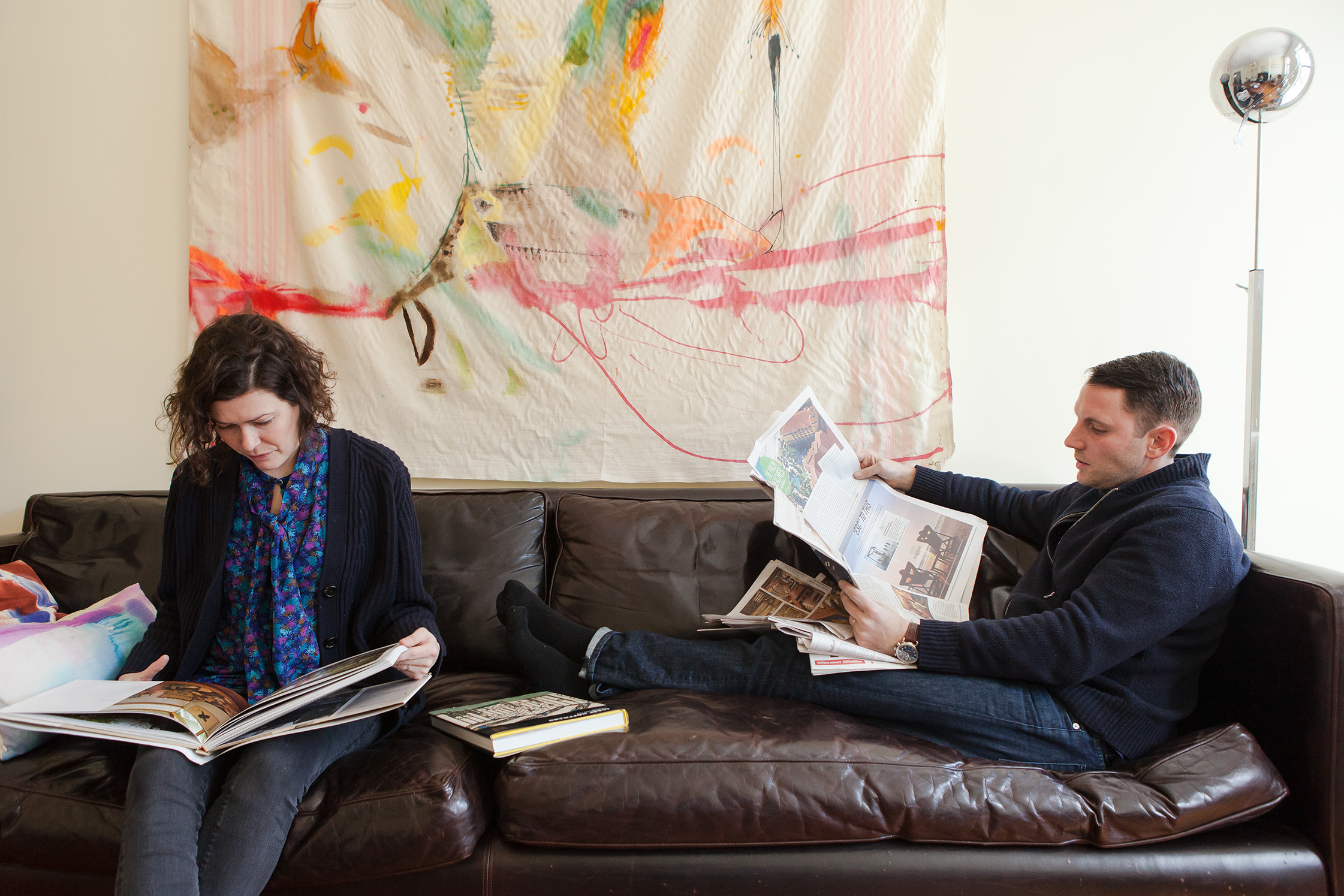
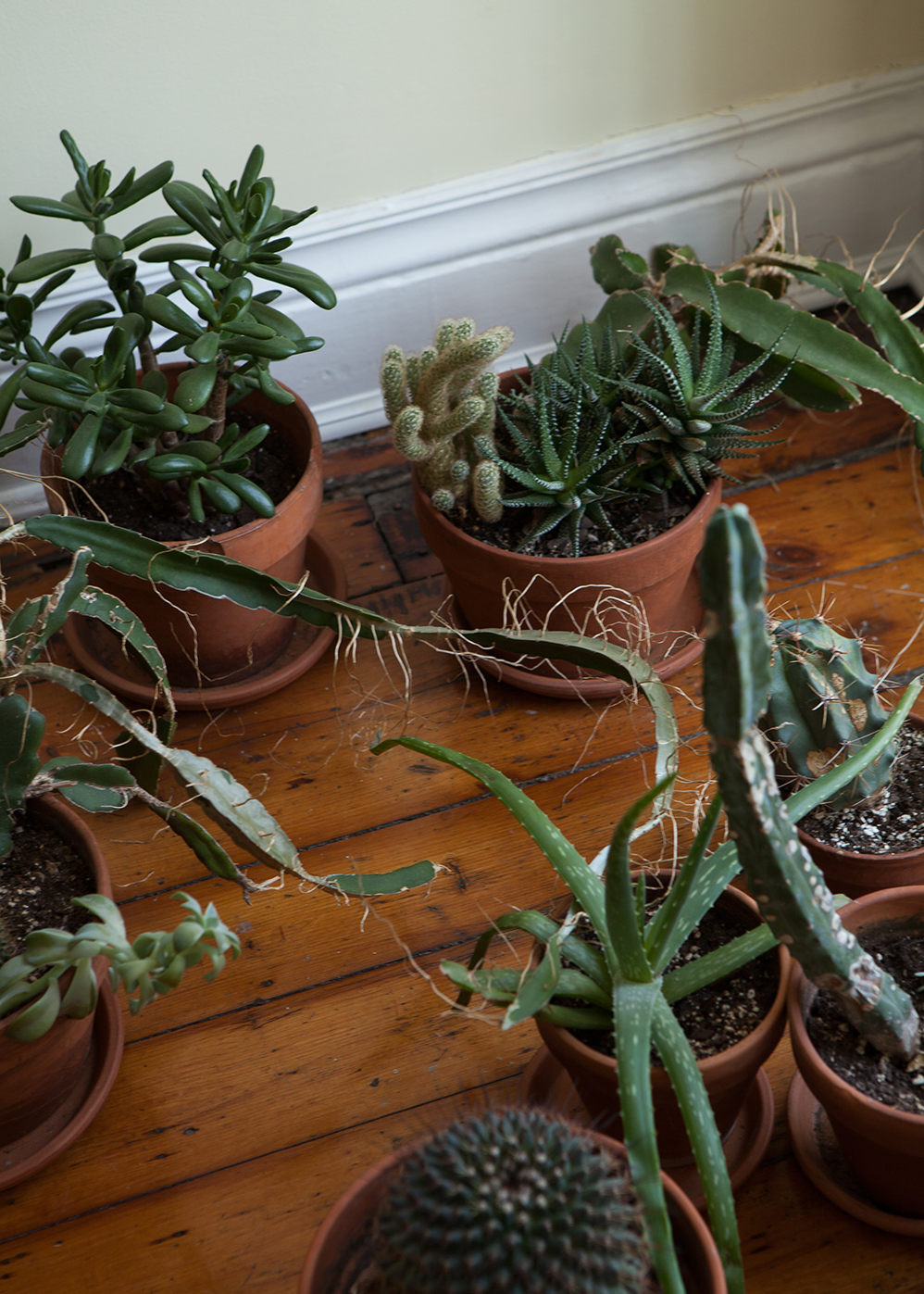


-
Tell me a little bit about your day-to-day routine. Do you both work from home?
Daniel: I’ll work out of different offices for different projects, but having such a big house, both Nana and I can work in different parts of the house during the day and not be on top of each other.
Nana: We’ll yell down to each other every once in awhile and then meet for lunch. We’ve gotten into the somewhat decadent habit of going to have lunch at Aita.
Daniel: And then we’ll come back and work. So the house has given us that freedom to both be home and still be able to focus.
-
Do you entertain a lot?
Daniel: We have people over for drinks a lot. We don’t do a lot of cooking.
Nana: We don’t do any cooking.
Daniel: Yeah, we want to fix the dining room. But we’ll have people over for drinks in the backyard in the summer.
Nana: And after work I often bring home one of my co-workers.

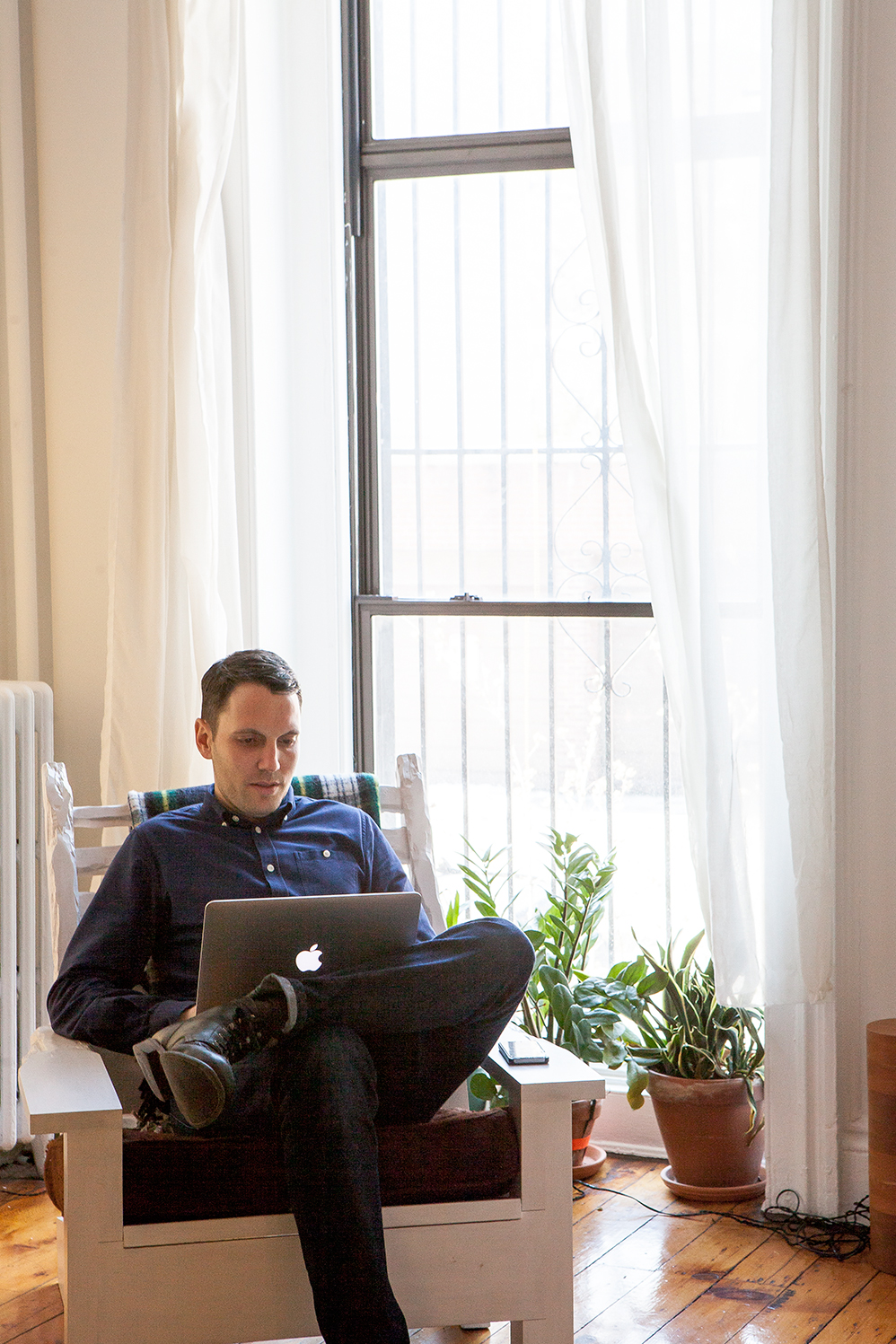



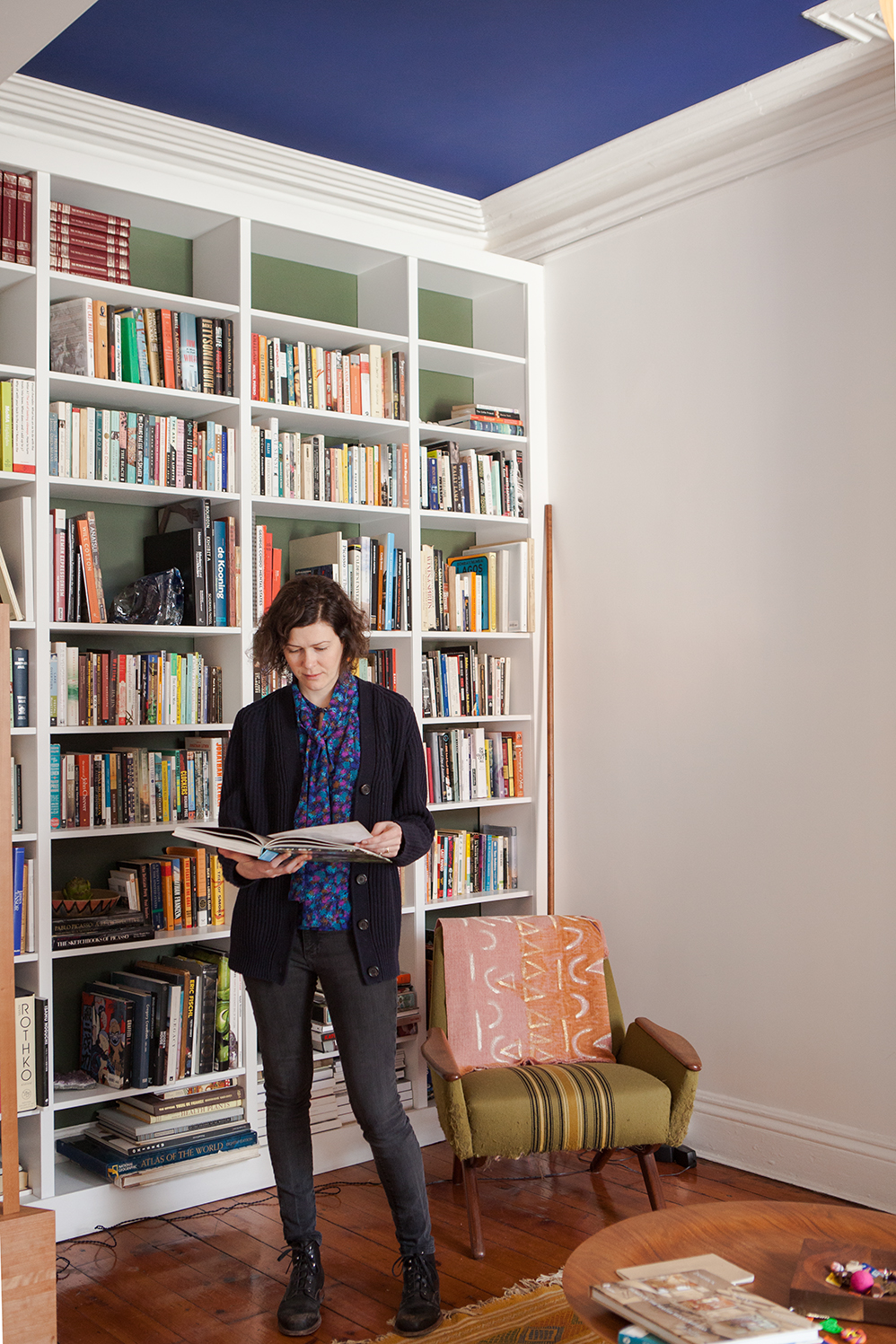
-
The creative energy is very evident in the space, there are so many layers to each room. How would you describe your creative process?
Daniel: I did a shoot last week for Daniel Libeskind and we were in his library and he talked about how in the morning he’ll pull out a random book to find his inspiration for the day. With Nana, certainly, and myself as well, we have such a great collection of art books that we’re pretty much able to do h the same thing. That’s how Nana works, she pulls out the art books…
Nana: …or the travel books or the whatever books, whatever we’re trying to work on – we go to a ton of art shows, the travel links it all together. For instance, Miró. We’ve seen a lot of Miró in Spain and then we sought him out in France and then we buy more books. A lot of the books come from our travel experiences as a reflection of what we saw.
Daniel: If we go to Belize, I read a book on the history of Belize. If we go to Puerto Rico I read the history of Puerto Rico.
Nana: Yeah, he does do that. When we travel we always get things together…
Daniel: …the rugs, the masks.



-
How often do you travel?
Nana: We try to travel a bit. I work really hard – to keep my morale up I like to plan something pretty far in advance. I also plan trips for Fort Makers. I enjoy the planning because it’s almost like a vacation in and of itself. And I’m not the kind of person who likes to go somewhere and miss the thing that you’re supposed to see there, that drives me crazy. Naomi and Noah (Clark and Spencer, respectively, Spear’s co-workers at Fort Makers) like to roll into a town and just feel it out instinctively. I want to do all the research I can beforehand, that makes me happy.
-
It sounds like the two of you have that in common.
Nana: We do a lot of research together. Even when we go out to dinner, it’s kind of geeky, but we’ll be on our phones planning things. It’s escapist. We don’t always need to talk about our own shit.

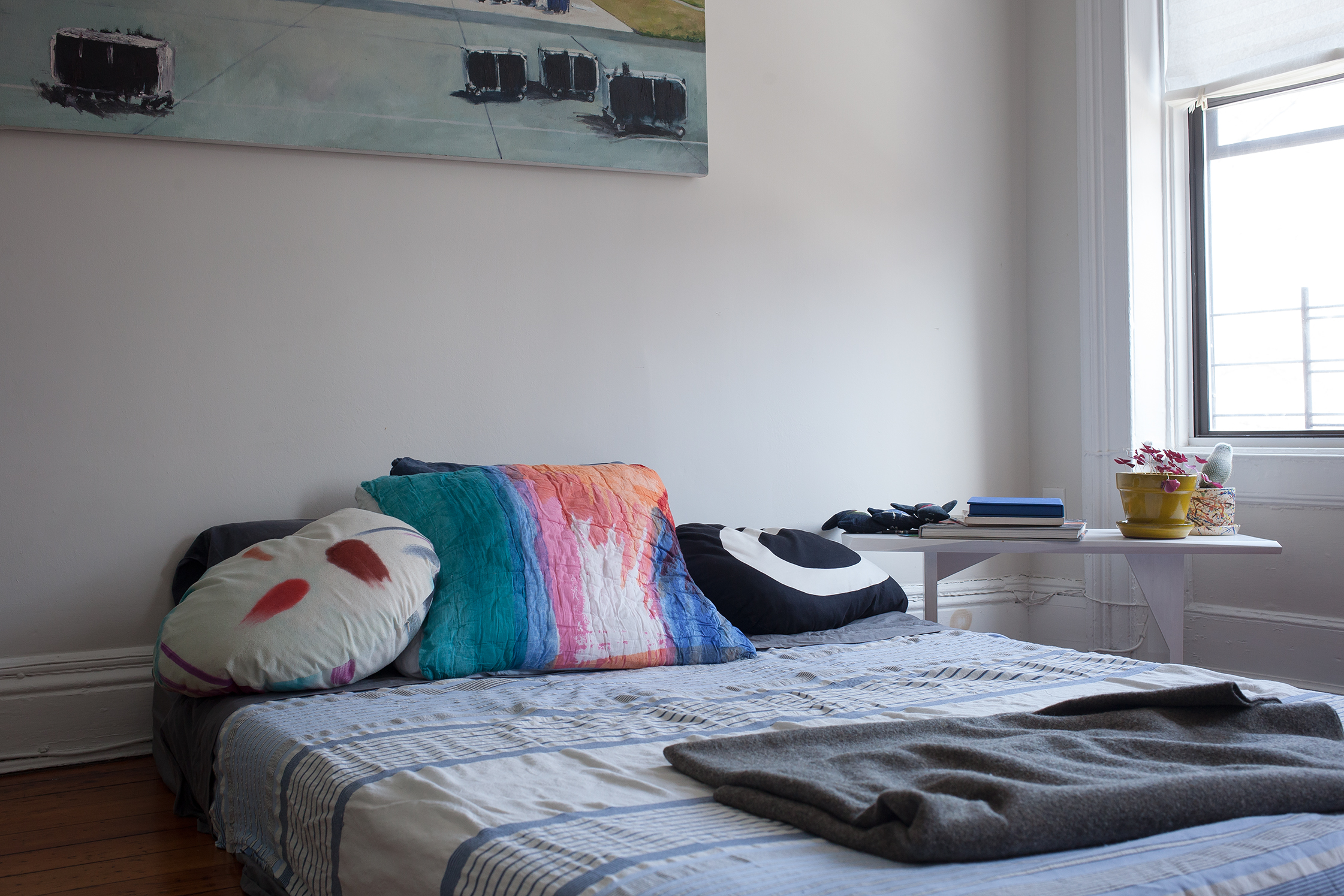

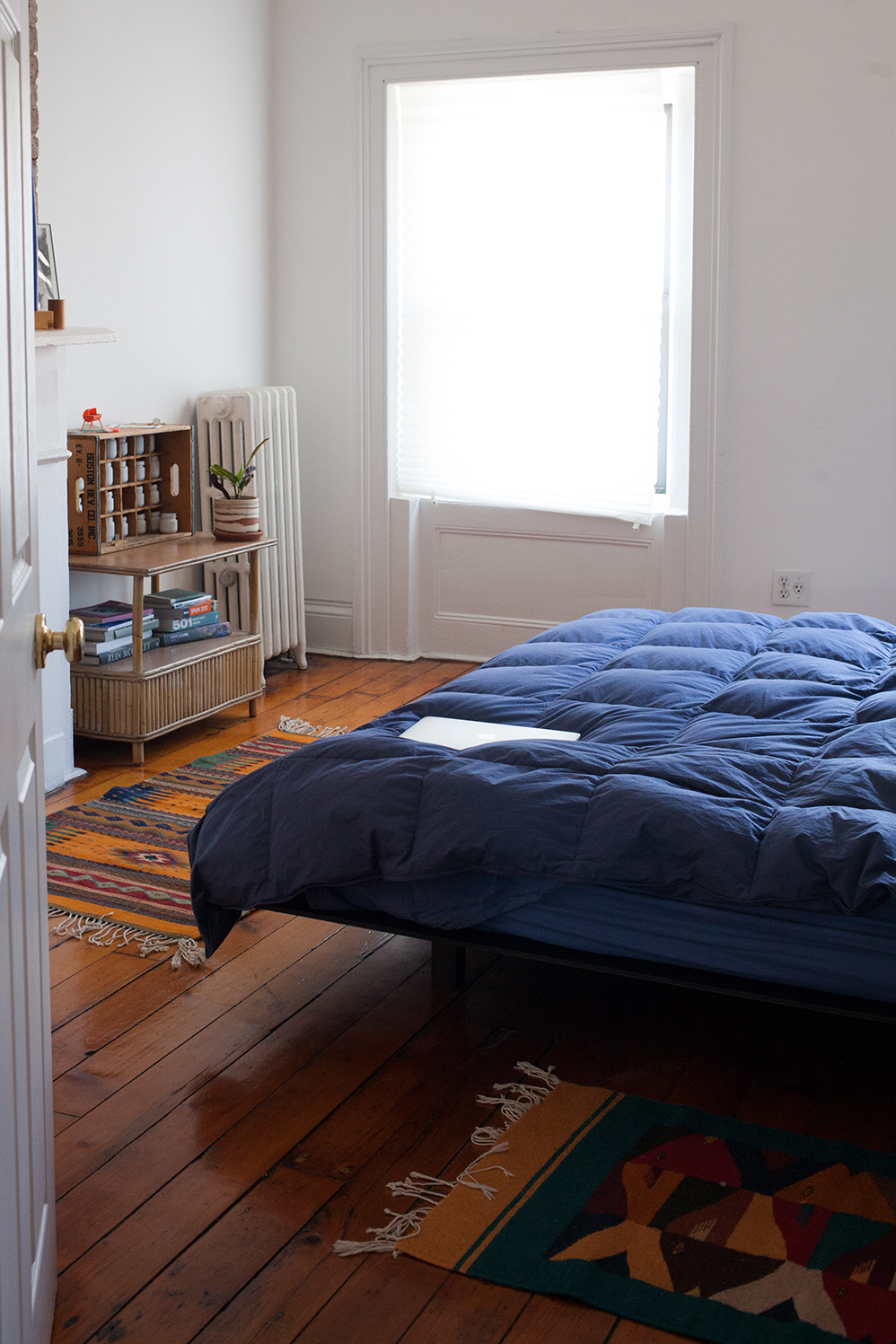

-
Tell me about the Fort Makers brand. How do you define what you guys are doing?
Nana: I feel like it’s a Bauhaus inspired art brand, specifically, in that we like to toy with things that could be perceived as art or shown as art. But the pieces are also useful, like Noah’s cutting boards. You can hang them as a mosaic so they’re like art pieces sold à la carte, but if you buy multiple pieces you have an installation, a Fort Makers world around you.
-
Is it that whatever inspires you is fed into whatever is made next? Do you respond to consumer attitudes?
Nana: Yeah, we definitely want to make money, but I think one of the ways artists and designers make money is to start with a lower price point and then get followers. Then they take these price point jumps and that often has to do with the size of the thing they’re making. To me, it makes sense that Noah is introduced to the market with these beautiful, small, artististic, art-like pieces. The lights are at the edge of where he’s gone thus far. They’re sculptures, they’re bigger, they’re more expensive, it takes more time to make them. We wanted to introduce him as an artist, not just a product designer. The same thing with Naomi. But I don’t think there’s anything wrong with making commercial things. I find it very interesting.





-
So the marketplace is very much considered in terms of what you’re doing.
Nana: Definitely, but we also want to have art shows. It’s hard for people to take in and understand everything we do. We see ourselves as being an artistic thinktank. We’ve worked with each other for years and we know how to tell each other, “No, I don’t like what you just made,” and not have hurt feelings. We love to get to use the skills we’ve gained from working so intimately together.
-
Do you focus primarily on the business and marketing side of things?
Nana: The business side of things is something I have to pay more attention to. I’m very much interested in the role of creative director that I play. My work is brainstorming and coming up with ideas. The way I think of it is when you see a runway show, that’s the dream, the biggest vision a brand can put out there, but when you see it in store, at a Neiman Marcus, it doesn’t come with that whole world unless you saw the show. We want to have those moments where we’re on stage, so to speak. Besides critiquing, that’s my primary role as creative director. Sometimes I’m designing, sometimes I’m being the third person getting things done. We really try and do that for each other.

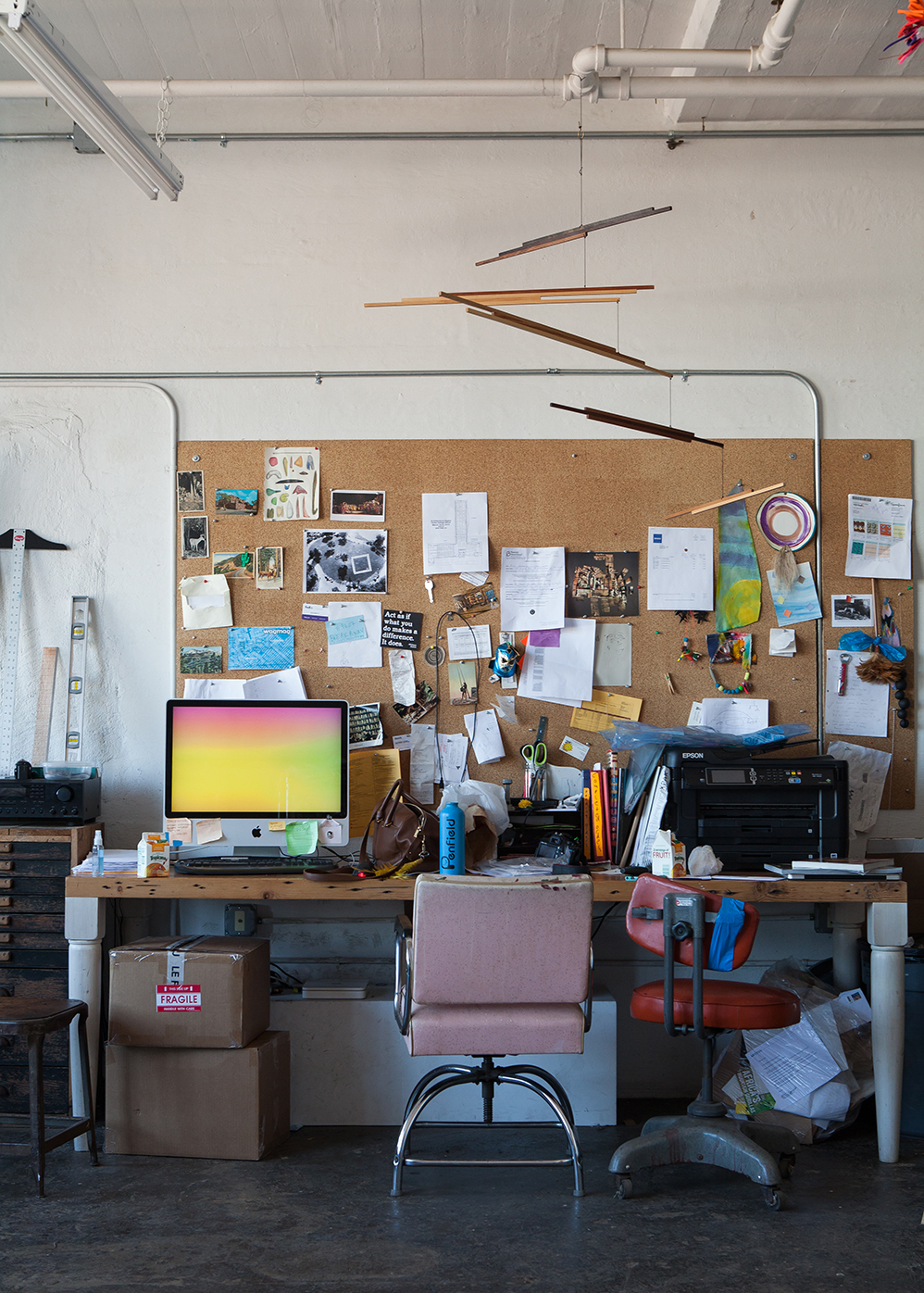






-
What do you think prepared you to take on this kind of responsibility?
Nana: I didn’t know I would get to this position. I didn’t really think about it. But I met Jim Walrod when I worked at Steven Alan. Actually, I dated him for a little bit. He’s like a design guru. That was an eye opener. I was like, “Your job is so cool.” I follow his tricks, which is mainly doing a lot of research. He always says when everyone is looking here, look there. He knows a lot about art. Besides that, going to grad school. I intended to be a film editor. That’s what I wanted to do. There, I learned I could lead creatively and I think that’s just a part of me that I kept nourishing. And now I’m doing it.
Nana and Daniel, it was great getting to know you, your creative practice and , of course, your lovely cats.
New York is one of the cities we’ve visited the most – meet the locals.
Photography & Interview: Sean Santiago

